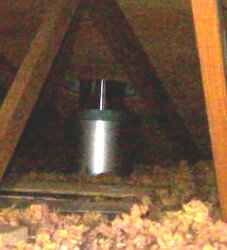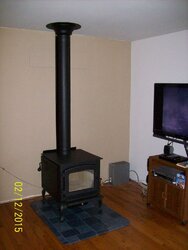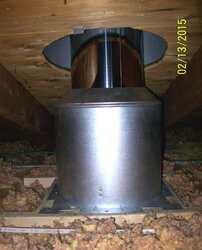Just about done with this installation. The telescopic pipe looks like this in ads:
http://www.ruralking.com/6-in-black-pipe-kit.html
I don't need the stove adaptor for length (is only 61"), and the bottom telescopic piece fits as snug in the stove vent as does the crimped end of adaptor, so do I need to use the adaptor? (it looks cleaner without it).
I'm not sure about shielding installation (SBI includes no directions). The side of box shows both pieces installed with the welded-on spacers up. The top section has folded-over sides to hold the bottom section as it slides. Seems the bottom section has to be installed with the spacers at the bottom - otherwise there will be no way to attach it to the stove vent rim; and the bottom section would have to be installed first, with the top one forced/"snapped on" to make the connection. The inspector approved less clearance (13") with the shield, so I want to make sure I do it right.
Couple more questions:
1) do the flue pipes need sealer anywhere, or does creosote seal them in time?
2) to clean this, do I need to remove the flue pipe? I thought with a straight flue/chimney, I'd be able to push a brush all the way through, but there's a plate at the top and it seems stuff will accumulate here (I was reading a post about baffles in a Drolet Pyropak rotting out from too hot fire, rain water, bad wood???)
3) I pulled the stickers off the glass, and dried glue/paper stuck - can I just scrape this with a sharp razor? (not sure if there's some coating that might get damaged)
Has been an enjoyable project, though was glad to finish the close-to-the-sheathing work in the attic without sticking nails in my head.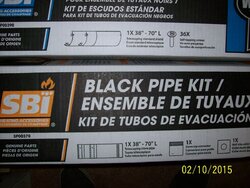
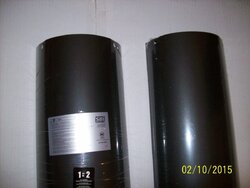
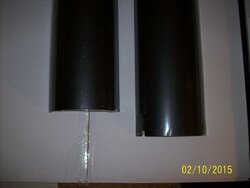
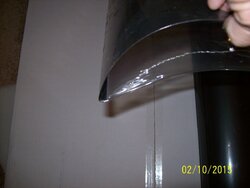
http://www.ruralking.com/6-in-black-pipe-kit.html
I don't need the stove adaptor for length (is only 61"), and the bottom telescopic piece fits as snug in the stove vent as does the crimped end of adaptor, so do I need to use the adaptor? (it looks cleaner without it).
I'm not sure about shielding installation (SBI includes no directions). The side of box shows both pieces installed with the welded-on spacers up. The top section has folded-over sides to hold the bottom section as it slides. Seems the bottom section has to be installed with the spacers at the bottom - otherwise there will be no way to attach it to the stove vent rim; and the bottom section would have to be installed first, with the top one forced/"snapped on" to make the connection. The inspector approved less clearance (13") with the shield, so I want to make sure I do it right.
Couple more questions:
1) do the flue pipes need sealer anywhere, or does creosote seal them in time?
2) to clean this, do I need to remove the flue pipe? I thought with a straight flue/chimney, I'd be able to push a brush all the way through, but there's a plate at the top and it seems stuff will accumulate here (I was reading a post about baffles in a Drolet Pyropak rotting out from too hot fire, rain water, bad wood???)
3) I pulled the stickers off the glass, and dried glue/paper stuck - can I just scrape this with a sharp razor? (not sure if there's some coating that might get damaged)
Has been an enjoyable project, though was glad to finish the close-to-the-sheathing work in the attic without sticking nails in my head.




Last edited:


